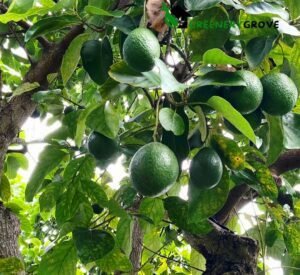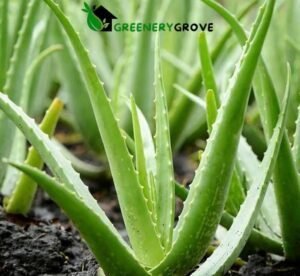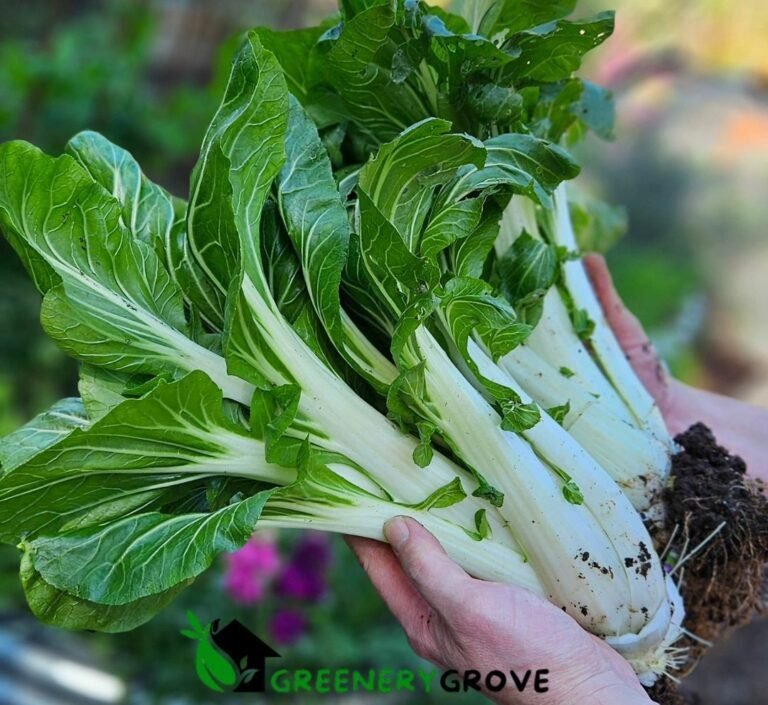Growing your own vegetables can be incredibly rewarding, and bok choy is a fantastic addition to any home garden. With its crisp texture and delicious flavor, this leafy green is not only a culinary delight but also a nutritional powerhouse. Let’s dive into the secrets of growing lush bok choy at home!
Understanding Bok Choy
What is Bok Choy?
Bok choy, otherwise called Chinese cabbage, is a famous verdant green vegetable in Asian cooking. It features thick white stalks and dark green leaves, offering a mild, sweet flavor that complements a variety of dishes.
Nutritional Benefits
Bok choy is low in calories however loaded with fundamental supplements. It’s rich in vitamins A, C, and K, as well as calcium, magnesium, and iron. These nutrients contribute to overall health, making bok choy a valuable addition to your diet.
1.Choosing the Right Variety
Types of Bok Choy
There are several varieties of bok choy to choose from, including baby bok choy, Shanghai bok choy, and standard bok choy. Each type has its own unique characteristics, so you can select the one that best suits your gardening space and culinary needs.
Best Varieties for Home Gardens
For home nurseries, child bok choy and Shanghai bok choy are amazing decisions. These varieties are compact and grow well in small spaces, making them ideal for container gardening or raised beds.
2.Optimal Growing Conditions
Climate Requirements
Bok choy flourishes in cool climate, making it ideal for spring and fall planting. It prefers temperatures between 55°F and 75°F (13°C to 24°C). Extreme heat can cause it to bolt, so avoid planting during the hottest months.
Soil Preparation
Well-draining soil rich in organic matter is crucial for bok choy. Go for the gold pH somewhere in the range of 6.0 and 7.5. Adding fertilizer or all around decayed compost can further develop soil fruitfulness and design.
Sunlight Needs
Bok choy requires full sun to partial shade. Guarantee your plants get something like 4-6 hours of daylight day to day. In hotter climates, some afternoon shade can help prevent bolting.
3.Planting Bok Choy
Seed Selection
Choose high-quality seeds from a reputable source. Organic seeds are a great option for those wanting to grow bok choy organically.
Germination Process
Begin seeds inside around 4 a month and a half before the last anticipated ice. Sow seeds ¼ inch deep in seed-starting mix, and keep the soil consistently moist. Germination typically takes 7-10 days.
Transplanting Seedlings
Transplant seedlings outdoors once they have at least two true leaves and all risk of frost has passed. Space plants about 6-12 inches apart to allow for adequate growth.
4.Watering Techniques
How Often to Water
Bok choy needs consistent moisture to thrive. Water plants deeply at least once a week, more frequently in hot, dry conditions. The dirt ought to stay sodden yet not waterlogged.
Best Practices for Watering
Water at the foundation of the plants to keep the foliage dry and lessen the gamble of illness. Mulching around the plants can assist with holding soil dampness and direct temperature.
5.Fertilizing Bok Choy
Types of Fertilizers
Balanced fertilizers such as 10-10-10 work well for bok choy. Organic options like compost tea, fish emulsion, and well-rotted manure can also provide essential nutrients.
Application Methods
Apply manure at establishing time and afterward every 3 a month during the developing season. Adhere to the producer’s guidelines for application rates and techniques.
6.Pest and Disease Control
Common Pests
Aphids, cabbage worms, and flea beetles are common pests that can affect bok choy. Consistently investigate your plants for indications of invasion.
Natural Remedies
Use neem oil, insecticidal soap, or companion planting to manage pests organically. For example, planting marigolds nearby can deter harmful insects.
Disease Prevention Tips
To prevent diseases like downy mildew and clubroot, practice crop rotation and ensure good air circulation around your plants. Try not to above water to decrease the gamble of parasitic contaminations.
7.Harvesting Bok Choy
When to Harvest
Bok choy is ready to harvest 45-60 days after planting. You can harvest the entire plant or take individual leaves as needed.
Harvesting Techniques
Use a sharp knife to cut the plant at the base. For continuous harvest, cut the outer leaves first, allowing the inner leaves to grow.
8.Storing and Using Bok Choy
Storage Tips
Store bok choy in the refrigerator, wrapped in a damp paper towel and placed in a plastic bag. It can remain new for as long as seven days.
Culinary Uses
Bok choy is versatile in the kitchen. Use it in stir-fries, soups, salads, or simply sautéed with garlic and soy sauce. Its gentle flavor coordinates well with different fixings.
9.Companion Planting
Best Companion Plants
Plant bok choy alongside herbs like mint and dill, or vegetables like carrots and onions. These buddies can assist with repulsing bugs and further develop development.
Benefits of Companion Planting
Companion planting can enhance soil health, attract beneficial insects, and reduce the need for chemical interventions.
10.Seasonal Care
Summer vs. Winter Care
In summer, provide shade to prevent bolting and water more frequently. In winter, protect plants from frost with row covers or cloches.
Adapting to Different Seasons
Adjust your planting schedule and care routines based on the seasonal climate to ensure healthy growth year-round.
these are the 10 things that you must follow for growing bok choy.
Organic Growing Methods
Benefits of Organic Gardening
Organic gardening promotes healthier plants, safer food, and a more sustainable environment. It avoids harmful chemicals, enhancing biodiversity in your garden.
Organic Pest Control
Use natural predators, organic sprays, and companion planting to manage pests. Hand-picking pests and maintaining plant health can also reduce infestations.
Troubleshooting Common Problems
Identifying and Solving Common Issues
Yellowing leaves may indicate nutrient deficiencies, while holes in leaves often point to pest damage. Identify issues early to apply the appropriate solutions.
Tips for Healthier Plants
Regularly check plants for signs of stress, water consistently, and provide adequate nutrients. Sound plants are more impervious to irritations and sicknesses.
Conclusion
Growing lush bok choy at home is not only feasible but also highly rewarding. With the right knowledge and techniques, you can enjoy a bountiful harvest of this nutritious vegetable. So why not start planting today? Your garden, and your kitchen, will thank you.
FAQs
What is the best opportunity to plant bok choy?
The best time to plant bok choy is in early spring or late summer, avoiding the hottest months to prevent bolting.
Can bok choy grow in containers?
Yes, bok choy can grow well in containers. Guarantee the holder is something like 12 inches down and has great seepage.
How do I know if my bok choy is ready to harvest?
Bok choy is ready to harvest when the leaves are crisp and the plant reaches about
More Blogs






Exploring Daffodils: From Origins to Symbolism and Garden Tips


Alocasia: The Majestic Elephant Ear Plant – A Guide To Varieties, Care, And Decorative Ideas


A Comprehensive Guide of Aloe Vera: Benefits, Development, and Uses





